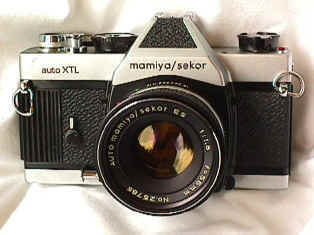 Mamiya Auto XTL:
Mamiya Auto XTL:Home Camera Articles FOR SALE Orders I Buy / Wants Repairs Books Adapters
 Mamiya Auto XTL:
Mamiya Auto XTL:
Amazing Advanced Forgotten SLR
Today most people have forgotten Mamiya ever made 35 SLRs. Almost no one remembers they once made one of the best and most advanced 35's.
"The Mamiya Auto XTL is undoubtedly the most feature laden SLR camera available today." Modern Photography Dec. 1971
"the camera design represents probably the most ambitious attempt of any SLR maker to incorporate all possible wanted features into one mechanically controlled automatic SLR." Modern Photography Dec. 1975
The Year was 1971. The US was in the Vietnam War. Nixon was in the White House. Mamiya's only 2 1/4 cameras were the twin lens reflex and Mamiya Press. Mamiya had plans to set the photo world on its ears with the most advanced 35 SLR ever. They damn near succeeded. In the US it was called the Auto XTL. It was a VERY well thought out camera, adding practically every feature Mamiya engineers could think of. Mamiya was so confident of it, they provided a TWO year parts and labor guarantee-- something few other cameras have ever equaled. The Auto XTL was the first shutter priority AE exposure SLR with a choice of Spot or Averaging metering.
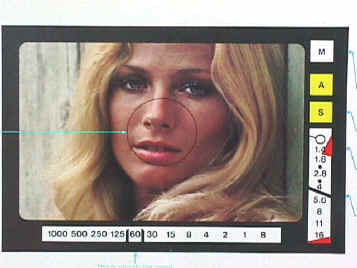
The XTL had the most information filled finder of its time, called the "Visual Control Center." Mamiya had the right idea, but the XTL was too far ahead of 1971 technology. Designed in a pre-LCD and pre-LED world, the finder readout depended upon illumination from the subject. If you chose a dark subject, it was LIGHTS......EH VIEWFINDER OUT. What a bummer. The semi-silvered pellicle mirror provided light to the film plane metering system, but unfortunately produced a noticeably dimmer finder. Alas, the advanced too far ahead of its time information featured finder was both a high point and the low point of XTL design.
The finder provided indication of 1) The 6 % Spot Metering pattern shown by the central microprism 2) Shutter Speed and F/Stops 3) Spot or Averaging metering indicators 4) The "M" indicated manual exposure
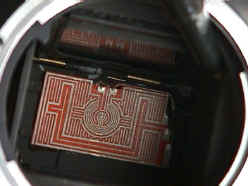 Amazingly,
the XTL metered light AT THE FILM PLANE! The Canon Pellix was the first camera to do this with its flag type
CDS cell which was borrowed later by the Leica M5 and CL. Mamiya took a different route,
placing a HINGED PRINTED CIRCUIT BOARD directly in front of the film plane, just behind a
pellicle mirror. While 70% of the light entering the lens goes to the finder,
30% of the light goes to the meter circuit board in
the mirror. This results in
a loss of about 1 stop of finder brightness. As Modern Photography pointed
out in their May 1971 test of the XTL, in front of the film plane is
theoretically the most correct place to take an exposure reading. The meterized
circuit board is shown at right, along with its reflection in the underside of the
pellicle mirror in up position. The meter has a large ASA range of 25 to 3200,
and a not so low EV range of 3 to 18 at ASA 100 with the 50/1.4 lens.
Amazingly,
the XTL metered light AT THE FILM PLANE! The Canon Pellix was the first camera to do this with its flag type
CDS cell which was borrowed later by the Leica M5 and CL. Mamiya took a different route,
placing a HINGED PRINTED CIRCUIT BOARD directly in front of the film plane, just behind a
pellicle mirror. While 70% of the light entering the lens goes to the finder,
30% of the light goes to the meter circuit board in
the mirror. This results in
a loss of about 1 stop of finder brightness. As Modern Photography pointed
out in their May 1971 test of the XTL, in front of the film plane is
theoretically the most correct place to take an exposure reading. The meterized
circuit board is shown at right, along with its reflection in the underside of the
pellicle mirror in up position. The meter has a large ASA range of 25 to 3200,
and a not so low EV range of 3 to 18 at ASA 100 with the 50/1.4 lens.
Mamiya (read that the US distributors of Ponder & Best in Los Angeles of Vivitar Series 1 fame) really came out with some great Ads for the XTL. But then, it really helped that they had a noteworthy camera to brag about. Memorable ad copy includes:
"Consider the camera a modern "light writing" machine with the photographer as the operator."
"Mamiya/Sekor Auto XTL - Designed from the inside Out"
"Innovative features derived from psychometric research"
"The XTL Project began with a series of consumer seminars several years ago."
"Distill the technical experience of the professional photographer and program it into the new camera."
"Let the photographer truly be the master of all light, picking its source and character regardless of the difficulties of determining exposure."
"Strive for simplicity of operation, but do not sacrifice creative control."
"The basic camera design should be part of a full SLR system and anticipate tomorrow's technological improvements."
The Auto XTL and X1000 are ergonomic masterpieces: more than the sum of their parts. Until you pick up this camera and get a feel for it, you will not understand what a pleasure and convenience it is to use their OVER SIZE Controls: shutter speed dial, shutter release, advance lever, rewind lever, depth of field lever, meter switch, meter lock, bayonet release, hand grip, and tapered focusing ribs. Separately they might not sound like much, but together they create a easy to use and operate design that very few other camera designs compare well to.
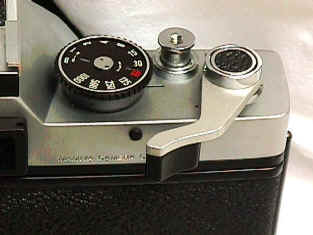
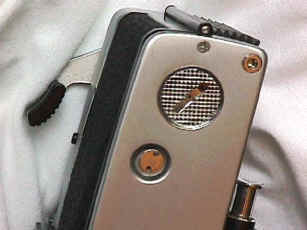
All the XTL controls were over-size for easy gripping. Note the large shutter release, advance lever, and shutter speed dial. The advance lever is ratcheted with a conveniently short 150 degree throw. The meter turns off when you pull the advance lever out, turns off when you push it in -- a very advanced feature later adopted by the Nikon F2, among others. The speed dial had a unique design with a top heavy serrated top. Near the rewind button you will find the motordrive connection cover for the promised and unfortunately undelivered motordrive. The large depth of field button is also visible. Earlier XTL's have a smaller depth of field button.
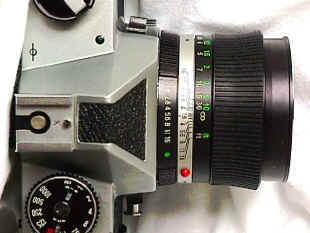
XTL lenses have an unusual focusing grip design. Rather than flat sided lenses, they tape OUTWARD towards the end to allow faster and easier focusing. Most ES lenses also have a practical built-in retractable lens hood. Remember to set the ES lens aperture ring to the green dot for shutter priority operation -- otherwise you are in match needle mode. Shutter speed range is a typical for the time 1 to 1/1000th plus B, with flash sync at 1/60th.
The shot on the left shows the depth of field button, the red dots to align lens mounting, and the XTL's unique at the time "grippable" textured front rubber grip. The grip was later widely copied in many guises. The Self Timer did double duty as a mirror lock up, since it sent the mirror up at the start of its action. Notice the "Exposure Hold" button opposite the self timer. I might be wrong, but I think that this was the first time an Exposure Hold was built into a AE exposure 35 SLR. On the right is the Meter Selector switch in "A" for "Averaging" position. Mamiya pioneered dual center weighted / spot metering in the earlier Mamiya 1000 DTL. Also shown is the lens release button.
Other nice features bless the XTL in abundance. It uses standard and easily available silver S-76 batteries. It has a battery check light near its rewind lever. A hot shoe sat atop the pentaprism. Steel springs gripped a standard PC connector to reduce unintentional disconnects. This is actually a great idea which others could use today, and don't! The strap lugs were reinforced with steel. Double exposures are possible by pushing in the rewind button after the first shot, and then carefully rewinding until you hear a click, and then advancing the film lever TWICE before taking the next shot.
"It would certainly appear that this most advanced of all automatic SLR's has been designed with an eye to the practical serious photographer who will use it." Modern Photography
The XTL proved to be a dependable camera. A friend of mine still carries one he originally purchased in 1971, bravely looking for extra lenses. The rarest XTL accessories are the prototype motordrive and bulk back which were apparently never sold to the public, at least not to the American public. I have only seen the Auto XTL in chrome, and the later and very similar X1000 only in black enamel. However, Paul Farber reported the availability of the XTL in black for an extra $30 in his review of the XTL for Camera 35 in May 1971.
Finding Mamiya XTL ES bayonet lenses can be a bit of a problem. Before the introducing XTL, Mamiya used the 42mm Pentax/Praktica Universal screw mount. After the XTL, Mamiya came out with yet another bayonet mount. Mamiya XTL ES mount lenses were only made about five years.
600
with the hood attached, the front of the 600 to the back of a mounted XTL measures 24 1/2 inches, stored on the base of the rotatable tripod socket are a black focusing lever which screws into the focusing helical and a chrome site which screws into the rear of the lens barrel, filter size a not to petite 90mm, preset f/8 to f/32, close focus 30 feet
Accessories included the finder magnifier, right angle finder, bellows with slide copier, and vertical bellows stand for macro close ups, portable spider leg copy stand, microscope adapter, and a monopod called a "Chest Pod."
Early XTL cases had an unusual hinged back, allowing the loading and unloading of film without removing the camera from the case. This was a nice touch, but it also greatly increased the cost of the case.
The successor to the Auto XTL was the X1000 of 1975, as pointed out by Mamiya Super Fan Chris Mullin who owns and uses most of the Auto XTL/X1000 system. In practical terms the X1000 amounts to a very slightly modified black enamel version of the XTL. Small X1000 changes include:
Overall, the X1000 was more ordinary looking than the Auto XTL. The X1000 only lasted about a year. Mamiya introduced two more incompatible bayonet mount 35 systems before giving it up and discontinuing their 35 SLRs in November 1984 to concentrate on the medium format market, where Mamiya has enjoyed remarkable success.
The Wonderful and Great and Very Hard to Find P Adapter
Mamiya ES lenses may be hard to find in some focal lengths, but there are a lot more Pentax 42mm screw mount lenses out there...in practically any focal length by dozens of different manufacturers. With the P adapter, you can use them on your Auto XTL or X1000!
The XTL had a new wide mouth bayonet which allowed the use of screw mount automatic lenses in stop down match needle mode with full auto diaphragm operation--providing you used the Mamiya "P" screw mount to XTL bayonet adapter. Today, these obscure adapters are very hard to find. Modern Photography stated "The Auto XTL is unique in being the only camera having one lens mount system which allows lenses from a completely different lens system to work on it was well as they do on the camera of which whey were originally designed for. As a matter of fact, if anything you have more control. Take any Pentax automatic or similar thread lens, place the "P" adapter on the Auto XTL lens mount and you now have a thread mount camera offering either spot or averaging metering at shooting aperture. The secret is a secondary automatic diaphragm mechanism at the bottom of the mirror box chamber."
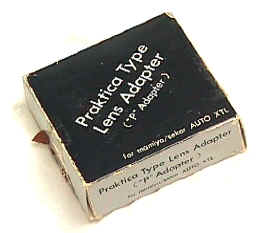
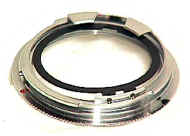
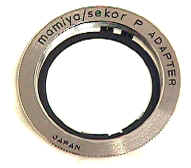
Well folks, if there is ever an "Adapter Hall of Fame," this guy is sure to be in it. This is one of the few adapters which allows lenses of one mount to have full automatic diaphragm operation and meter coupling on another mount body. The idea was continued years later with the Pentax screw mount to K bayonet adapters. If you leave the adapter on the lens, it effectively becomes an ES bayonet lens. The adapters are hard to find, but the instructions are even harder to find, so hear they are:
1. Attach P adapter to XTL or X1000 body
2. Mount lens on M42 lens by screwing lens into adapter
3. Depress depth of field button and change F/stops or shutter speeds until viewfinder meter needle moves into the index mark just above the 1.4 index to use match needle stop down metering method.
4. Release depth of field button and shoot.
Some 42mm mount lenses may not fit the P adapter, IF they have metering lugs for full aperture metering -- such as the excellent Fujinon screw mount lenses for the Fujica 801 and 901. Some owners use a file to remove the offending Fujica metering lug in order to mount them on other cameras. The best Pentax 42mm screw mount lenses are generally considered to be the later multi-coated SMC and Super-Multi-Coated Takumars.
Interestingly, if you can find a Mamiya ES T mount -- no easy chore -- the same metering methodology will work with T mount lenses in stop down mode.
From a modern perspective, the XTL was amazing for a feature we no longer have today. It was a MECHANICAL AE exposure SLR. Unlike most of today's modern wonder cameras, if the battery dies, you ONLY lose the meter --- not the shutter. Who knows? Perhaps a modern camera designer will read about the XTL and use this startling concept in tomorrow's Nikon F6 or Canon EOS 2 ??? hmm. maybe. In 2002 Nikon introduced the retro style metal bodied FM3A, an AE SLR that works even if the battery dies -- back to the future.
How Did Mamiya Go Wrong?
Why wasn't the XTL a resounding success?
In their quest (I like that word) for the most advanced SLR of its time, Mamiya execs overlooked a few pitfalls:
The XTL was not inexpensive. In December 1971 the XTL with 55/1.4 sold for $259 -- while the Nikon Ftn with 50/1.4 sold for $325, the Beseler Topcon Super D with 58/1.4 sold for $285, the Canon FTb QL with 50/1.4 sold for $265, the Pentax Spotmatic II with 50/1.4 sold for $245, and the Minolta SRT 101 with 58/1.4 sold for $239. In other words the XTL was competing in the same price range against cameras with larger systems and arguably better fit and finish -- not a good idea for a newbie camera.
The biggest Achilles heel for the XTL photog is the unfortunately dim "Visual Control Center" readout for the meter and exposure information. Unfortunately the readout depends upon illumination from the viewed scene. A dark subject gives you a lights out Control Center. Due to 30% of the light thru the lens going to the metering system in the mirror, the viewfinder is none too bright and comparatively dim by modern standards.
Many 1971 photogs had little faith in AE exposure -- a prime selling point for the XTL.
The fit and finish of the XTL is good, but it does not compare well side by side the likes of the more established Nikon FTn/F2, Canon F1, Pentax Spotmatic, Topcon Super DM, Konica Autoreflex T2 and Olympus OM-1.
While the XTL offered a large lens lineup from 21mm to 800mm, XTL ES lenses offering AE exposure only spanned 21mm to 200mm. If a major feature of your camera is AE exposure, it's a big disadvantage if all of your lenses don't offer AE. Longer than 200 longer lenses used the old fashioned preset diaphragm design. The XTL's lens lineup was adequate, but far behind Nikon, Canon, Minolta, Pentax, Konica and Olympus.
While Mamiya promised to introduce a XTL motor and bulk film back from day one, but neither saw the light at the end of a regular production line.
Little things slipped by Mamiya in their inexperience as a major 35 camera maker. Putting their new baby in the higher price bracket was a major marketing mistake. Another is that XTL lens boxes are uselessly, even laughably large -- thereby increasing shipping costs and overhead by decreasing the number of lenses in a given size shipping crate. On the other hand, maybe Mamiya hoped to save money by using re-badged 2 1/4 boxes...hmm.
Significantly the XTL was introduced BEFORE Nikon, Canon, Pentax, Minolta or Olympus marketed their first AE exposure SLRs. Mamiya saw an opportunity, and went for it. In 1971 the XTL's only Japanese AE SLR competition was the Konica Autoreflex T2 and Miranda Sensorex EE. 1972 would see the introduction of more serious and successful Aperture Priority AE competitors: Nikon's Nikkormat EL and Pentax's Electro Spotmatic -- effectively spelling the end to the Mamiya XTL's narrow window of marketplace opportunity.
What did Mamiya do right with the XTL?
The XTL is packed full of as many technical delights as was possible in 1972. Mamiya designers really did an outstanding in rethinking and attempting to improve SLR design. When introduced in April 1971, the XTL was arguably the most technologically advanced 35mm SLR in the world. The P adapter which gave the XTL access to an extremely large range of quality 42mm screw mount lenses. Large camera controls and conveniently shaped lens barrels were nice bonuses for XTL shooters. With 2020 hindsight, a mechanical shutter on an AE camera is a much appreciated feature in today's world of totally battery dependent cameras.
Though incredibly innovative, Mamiya wasn't able to find all the pieces of the puzzle for the XTL, but it was close, very very close.
For More XTL info visit:
Revised: November 25, 2003 . Copyright � 1998-2002 Stephen Gandy. All rights reserved. This means you may NOT copy and re-use the text or the pictures in ANY other internet or printed publication of ANY kind. Information in this document is subject to change without notice. Other products and companies referred to herein are trademarks or registered trademarks of their respective companies or mark holders.